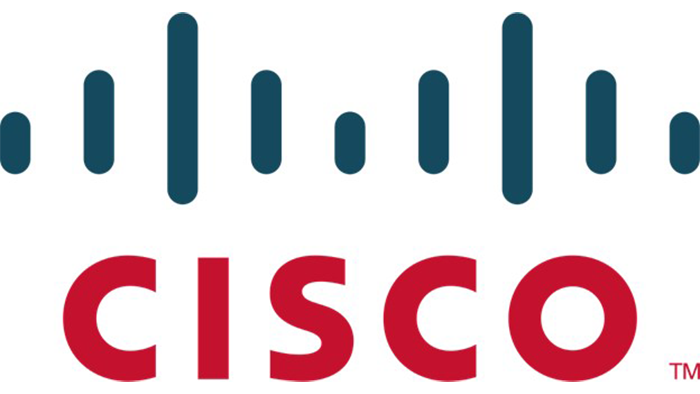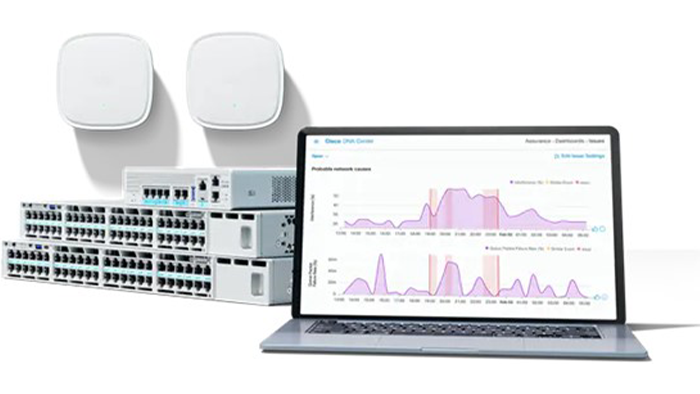
Cisco SD-branch
This large global company was founded in 1984 by two computer scientists from Stanford University who were looking for an easier way to connect different types of computer systems.
It can be said with confidence that Cisco is the largest and most famous company producing network and communication equipment and devices in the world.
Cisco launched its first product in 1986 and is now a multinational company with more than 35,000 employees in more than 115 countries. Today, Cisco equipment is the most important network device for service providers, such as providing Internet services, etc.
Even small and medium-sized businesses and organizational clients include companies, government agencies, municipal services, and educational institutions. You can see these devices in many banks and government centers inside our country.
The licensed Cisco equipment and even the operating system connect people, computing devices and computer networks. This equipment allows people to access or transfer information regardless of time difference, location or type of computer system.
Cisco has many hardware and software products with many branches, each of which is among the most widely used in its field. In the following, we will review three Cisco SD-Branch products.
Cisco DNA Center technology is one of the Cisco SD-branch products that has the ability to manage the End-to-End network from neighboring organizations, branches and from WAN to Cloud. In addition, this technology can be implemented on SDN controllers and Cisco Application Policy Infrastructure Controller-Enterprise Module or APIC-EM for short.
Using simple workloads, DNA Center facilitates the process of designing, preparing and implementing policies across the network. In addition, it provides end-to-end visibility and uses network information to optimize network performance and create the best user and application experience.
In the Analytics and Assurance processes, using network observation, network performance is improved and the best experience is provided for the user and the application.
Policy-based automation reduces downtime and improves security.
DNA Center facilitates the process of policy design, preparation and implementation across the network by using simple workloads.
The enterprise network is managed from a centralized dashboard.
Considering that Cisco DNA Center technology is one of the new technologies, many features have been implemented in it. By using a specific and single dashboard in this technology, to manage and automate the network, you can save time. He also started designing an advanced enterprise network by creating sites in different geographical locations and then started adding network equipment.

Cisco SD-branch
With the help of Cisco DNA Center technology, rapid development of organizational activities takes place along with specific workflows as well as reusable templates. At the same time, the time required to configure and prepare thousands of network equipment throughout the organization will be reduced from several hours to a few minutes. It should be noted that the process of automating network changes leads to a quick response to organizational needs.
The Cisco Enterprise Network Convergence System 5000 or NCS 5000 router that is another Cisco SD-branch product, that provides various capabilities such as: third-party application hosting, machine-to-machine interface, telemetry and flexible package delivery by benefiting from the powerful Cisco IOS XR operating system.
Also, this router is a suitable option for data centers with MPLS infrastructure and communications and can create agility, flexibility and bandwidth for voice, video, data, mobile and cloud communications for these spaces. In addition, by using network virtualization (nV) technology, they coordinate different layers of the network and greatly reduce costs.
Network functions virtualization, abbreviated as NFV, is a way to virtualize the structures and components in the network. Components such as: router, firewall and others. These components are placed on the hardware as virtual machines and allow the service providers to use the characteristics of each in a certain place on their networks. By using Cisco NFV, Cisco gives network managers the opportunity to virtualize their equipment easily.

Cisco SD-branch
By implementing Cisco NFV, you don’t need to buy the hardware you need. Hardware such as routers and firewalls, etc., each of which performs a specific task. Cisco NFV also increases the scalability and agility of the network and allows the service provider to implement and provide the services and applications needed by users and customers on demand. These things are easy to do and do not require any new hardware.
With the use of Cisco NFV, the service provider can have all the components and needs of a network on standard hardware platforms instead of running on separate hardware and, as mentioned, on virtual environments. The next issue is the virtualization of network tasks and the use of several simultaneous components that are running only on one server.